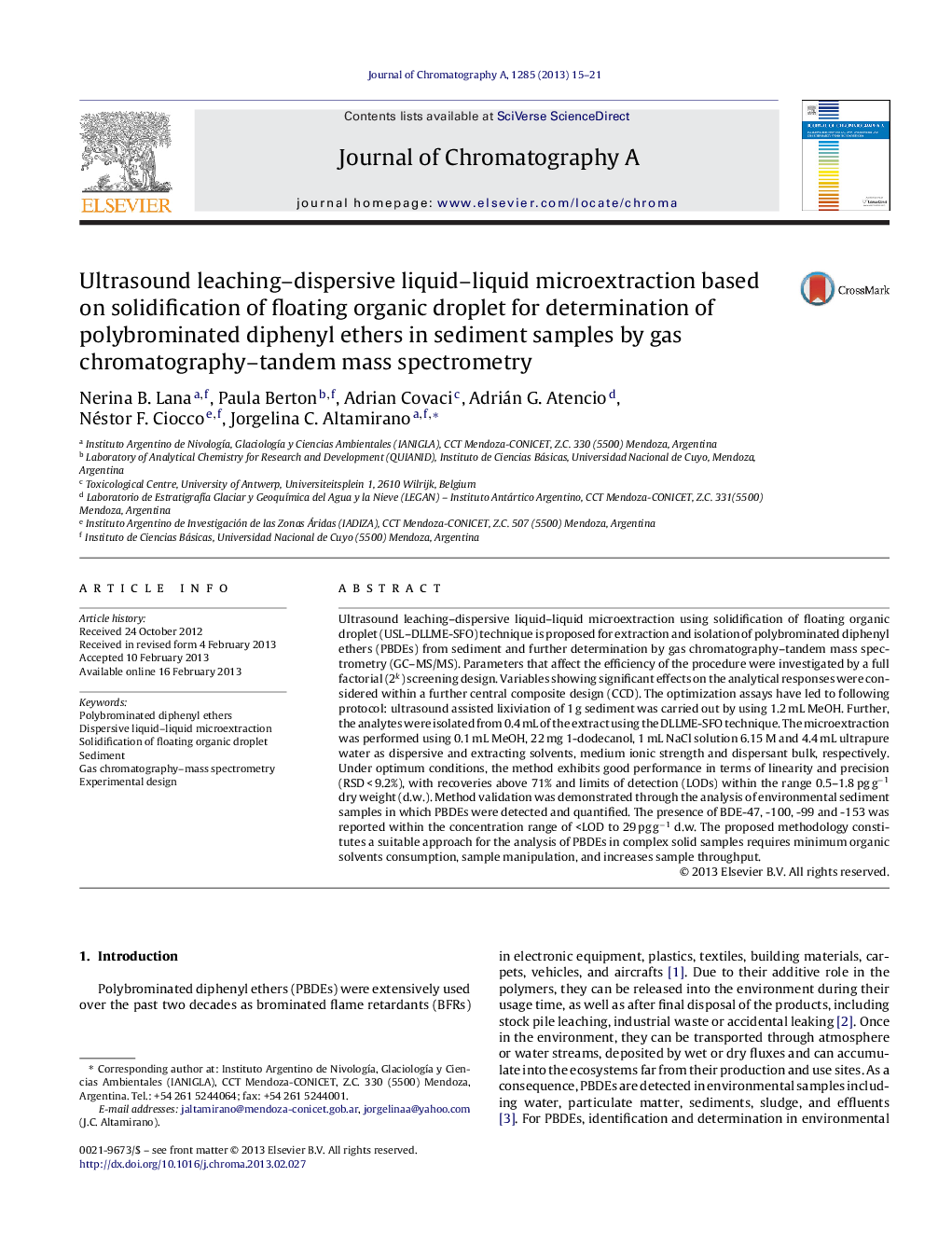| Article ID | Journal | Published Year | Pages | File Type |
|---|---|---|---|---|
| 1201741 | Journal of Chromatography A | 2013 | 7 Pages |
Ultrasound leaching–dispersive liquid–liquid microextraction using solidification of floating organic droplet (USL–DLLME-SFO) technique is proposed for extraction and isolation of polybrominated diphenyl ethers (PBDEs) from sediment and further determination by gas chromatography–tandem mass spectrometry (GC–MS/MS). Parameters that affect the efficiency of the procedure were investigated by a full factorial (2k) screening design. Variables showing significant effects on the analytical responses were considered within a further central composite design (CCD). The optimization assays have led to following protocol: ultrasound assisted lixiviation of 1 g sediment was carried out by using 1.2 mL MeOH. Further, the analytes were isolated from 0.4 mL of the extract using the DLLME-SFO technique. The microextraction was performed using 0.1 mL MeOH, 22 mg 1-dodecanol, 1 mL NaCl solution 6.15 M and 4.4 mL ultrapure water as dispersive and extracting solvents, medium ionic strength and dispersant bulk, respectively. Under optimum conditions, the method exhibits good performance in terms of linearity and precision (RSD < 9.2%), with recoveries above 71% and limits of detection (LODs) within the range 0.5–1.8 pg g−1 dry weight (d.w.). Method validation was demonstrated through the analysis of environmental sediment samples in which PBDEs were detected and quantified. The presence of BDE-47, -100, -99 and -153 was reported within the concentration range of ► USL–DLLME-SFO-GC–MS/MS proposed for analysis of PBDEs congeners in sediment samples. ► Characterization of the procedure by using multivariated statistical tool. ► Interaction of variables conditioned the efficiency of the microextraction technique. ► The methodology LODs were in the order of pg per g, with an acceptable precision. ► Successful application of methodology for analysis of Argentinean sediment samples.
